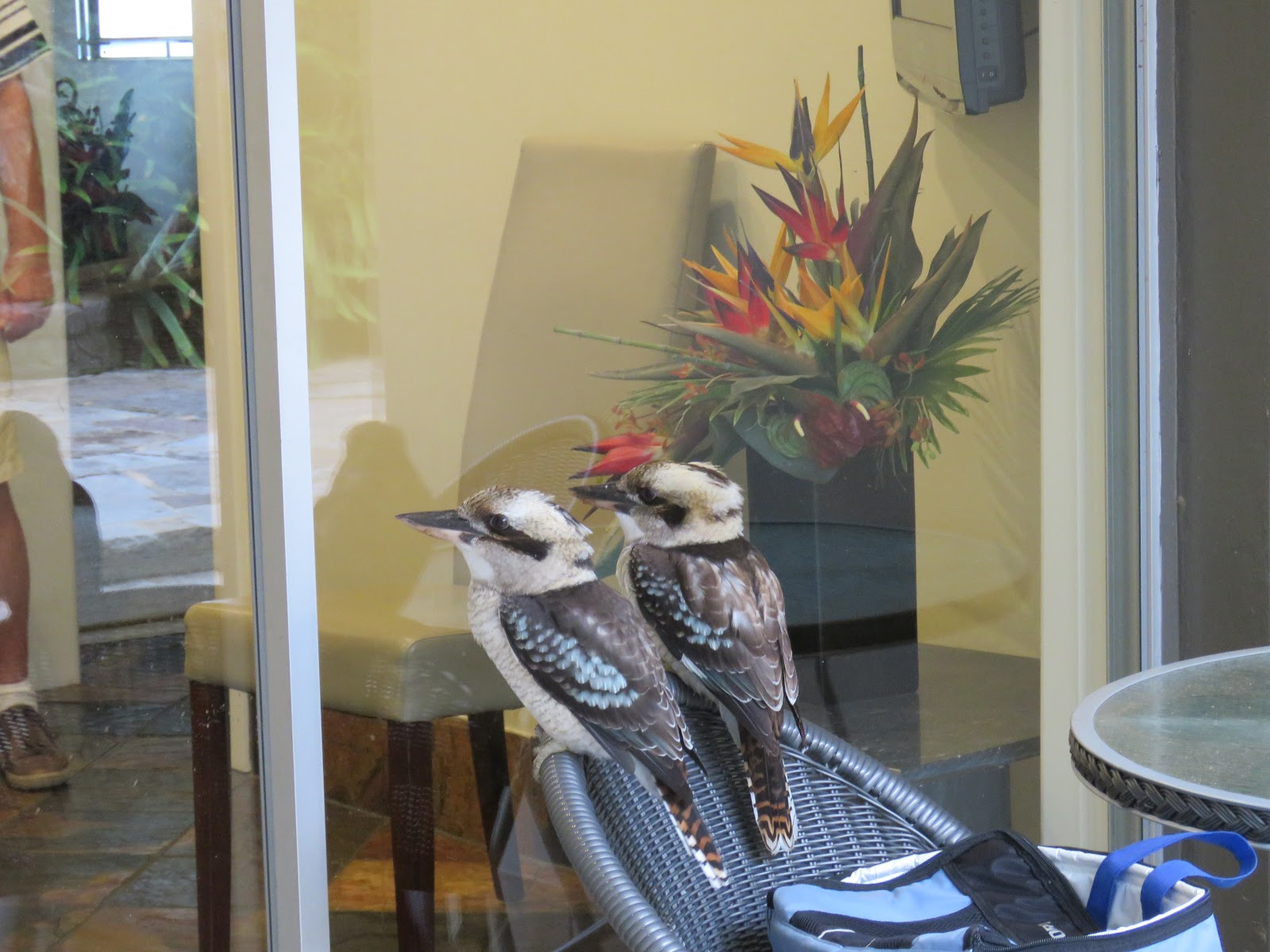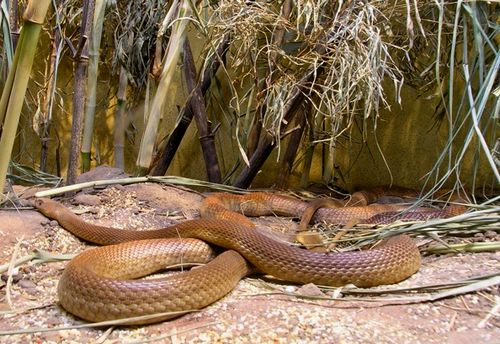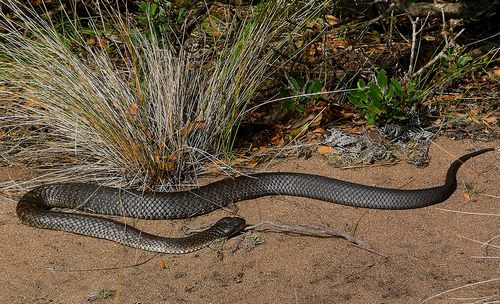 |
| Twig snake, also known as vine snake, was on the railing at Jabula Lodge and Restaurant as we walked up the steps to the restaurant. See the story below. |
“Sighting of the Day in the Bush”
 |
| A praying mantis stopped by for a visit this morning. After it walked on the veranda table, it landed on Tom and then landed on me. Friendly little fellow. |
When Uschi and Evan suggested, the four of us got together for dinner at Jabula Lodge and Restaurant last night. We were thrilled to have the opportunity to spend another evening with this lovely couple.
 |
| Jaun, snake handler, captured the snake, placing it in this container and releasing it in Lionspruit, where other caught venomous snakes are sent to live out their lives. |
We parked the red car in our usual spot, reasonably close to the stairway entrance to the restaurant. Clumsy me, I’m always a little tentative on the “open” wood staircase up to the restaurant and carefully watch my step with Tom behind me.
When approaching the steps, a guest of the resort and one staff member hollered, “Look out! There’s a snake on the railing! Neither of us panicked. Instead, we searched the railing for the culprit and waited to see what was going to transpire.
 |
| Young zebra in the garden. |
Had no one alerted us, we easily would have been in striking distance of the deadly venomous snake, a twig, also known as a vine snake. Here’s some information on these dangerous creatures from this site:
“This perfectly camouflaged tree-living snake is seldom seen because of its excellent camouflage and habit of remaining very still in low shrubs, observing the ground below for passing lizards and snakes. Birds often mob this snake, inflating its neck with its bright orange tongue flickering – this leads to the incorrect assumption that they lure birds closer with their tongue. It is exceptionally placid but, if provoked, will inflate its neck and strike viciously. Bites are rare and most inflicted on snake handlers.
Like the Boomslang, this snake’s venom is haemotoxic, affecting the blood clotting mechanism and causing uncontrolled bleeding. There is no antivenom for the poison of this snake, and although a few fatalities have been reported, none were in South Africa.”
 |
| We’re treasuring every moment with the wildlife, knowing once the holidaymakers arrive, we’ll have considerably fewer visitors until well into January. |
The hotel guest grabbed the swimming pool net and tried to capture the snake…not so bright. That didn’t work and was foolhardy. A degree of commotion ensued while Dawn contacted the young Juan, who’s fast becoming the best snake handler in Marloth Park.
In the interim, we gingerly climbed partway up the steps to take the above photo of the snake as it politely posed for us sticking out her pink forked tongue. Nice.
 |
| When I didn’t see Little on the veranda, he knocked over the chair where I sit when he visits—determined Little, trying to get my attention. It worked! |
Jaun arrived within 10 minutes and in moments captured the snake and safely placed it into a plastic container. From there, he’d take it to Lionspruit (the game reserve within Marloth Park) and release it. There are no residences in Lionspruit, making this an ideal spot to transfer captured snakes or other venomous creatures.
We had a chance to congratulate Jaun on his excellent snake handling skills. He attended snake school with us many months ago, and now he is a volunteer snake handler. Glad we didn’t go down that road!
 |
| Pellets and ice-cold carrots were on the menu on a scorching day. He’s so exhausted in the heat he lays down to dine. |
After the commotion died down and Juan was on his way, we entered the bar and engaged in enthusiastic discussions with staff and guests over the excitement we all experienced in seeing this scary snake.
 |
| Giraffe on the side of the road on our way to Jabula. |
I sipped on one extra light wine cooler while Tom had his usual brandy and Sprite Zero. In no time at all, Uschi and Evan arrived, and they too were delighted to sit at the bar as the lively conversation ensued for the remainder of the evening.
Finally, we ordered our meals, and when the food was just about ready, we wandered outside to the veranda to dine. During our dinner and after Dawn and Leon joined us at different points, the four of us for more great chatter, laughter, and good times.
We didn’t walk out the door until close to 2200 hrs (10:00 pm), late for an evening out to dinner in this sleepy community. Within an hour, I was fast asleep, the cortisone no longer in my system, and slept no longer alluding to me.
 |
| Another giraffe on the road in the evening. |
When I awoke this morning and still had 80% battery left on my phone, I knew I’d slept well. When I can’t sleep, I read books, play games, or read the news on my phone, which I’d avoiding last night. I feel like a new person today.
Tonight, we’re off to Ngwenya for river viewing and the buffet dinner. Rita and Gerhard won’t be returning for a few more days, so we’ll be off on our own. We always enjoy time with friends but being “just the two of us” isn’t bad either.
May your Thursday be pleasant, whatever you decide to do.
Today’s expected, high temp? 37C (98F)…A refreshing break from yesterday’s
40C (104F).
Photo from one year ago today, December 6, 2017:
 |
| A band was playing on the beach in Arica, Chile. For more photos, please click here. |
























































